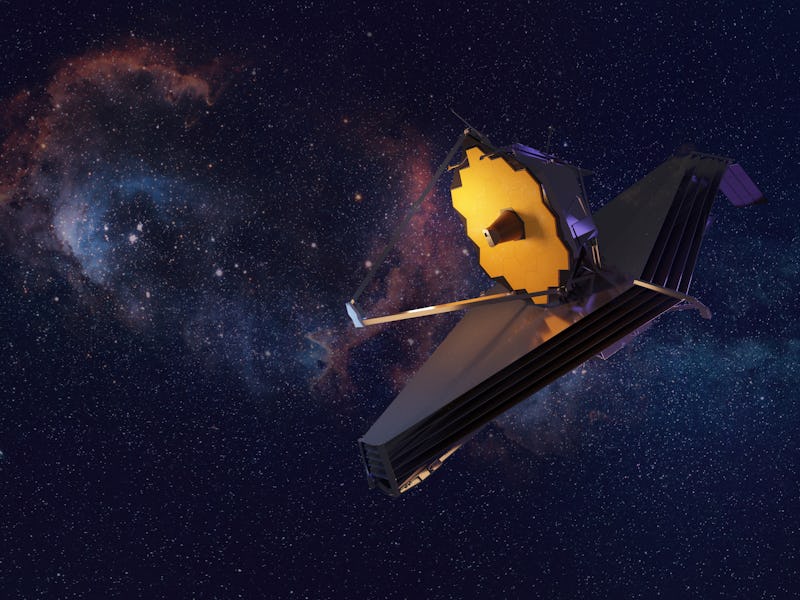Engage: The Webb Telescope reaches a critical science milestone
We are live.

There’s nothing quite like the moment you switch a brand new gadget on for the first time — that refreshing ‘ding!’ and an unstained, glowing screen almost feel as productive as doing actual work. If you know what I am talking about, then you can likely imagine the satisfaction the scientists running the James Webb Space Telescope feel right now: All Webb’s science instruments are powered on, ready to reveal our cosmos as never before.
What’s new — On January 31, NASA revealed via the Webb Telescope’s Twitter and blog that the telescope’s suite of science instruments are now all on — a critical milestone on the road to beginning its era of discovery.
This represents the culmination of a weeks-long process that began soon after the Webb launched into space on December 25, 2021. The first instruments to switch on were the MIRI instrument and certain other parts — now, NIRCam, NIRSpec, and FGS/NIRISS are also confirmed to be switched on.
All this is possible because the telescope is now safely stationed at Lagrange 2, a point 1 million miles away from Earth where gravity keeps the observatory in a stable orbit far beyond the Moon.
The Webb team also turned on the observatory’s high-gain antenna on Friday, boosting its communication line with Earth and ensuring the swift return of images and other observations when the time comes.
Ultimately, we will still need to wait until the summer to see the fruit of all this labor and many billions of dollars, but in the meantime, we do have some idea of Webb’s first targets slowly trickling out — many of these are of course informed by what the main instruments on Webb are capable of.
What can Webb’s science instruments do?
The ultimate goal of the James Webb Space Telescope is to use infrared imaging and other tools to stare deep into space and time. The telescope will reveal new details about the universe in its infancy, perhaps even the first-ever stars. At the same time, it will also observe the planets and objects in our own Solar System with fresh eyes, heralding an age of new astronomical discovery closer to home, too. It will stare deep into the gassy depths of strange worlds’ atmospheres looking for signs of life, and perhaps even reveal the intimate secrets of distant galaxies never seen before.
To do all this, the Webb is kitted out with four main instruments — MIRI, NIRCam, NIRSpec, and FGS/NIRISS. Here’s a (very, very brief) breakdown of what they do:
- MIRI: The Mid-Infrared Instrument (MIRI) is both a camera and a spectrograph. It can see infrared light, which our eyes cannot see. Infrared light can help reveal phenomena like redshift, which can help us understand how galaxies, stars, and planets form and evolve over time. MIRI will be crucial to several Webb science missions, like the quest to discover the first stars and to understand black holes.
- NIRCam: The Near-infrared Camera is the telescope’s primary imaging tool. It will be key to science that relies on direct imaging, a method of detecting exoplanets around stars and other distant objects. The camera essentially blocks out the target star’s light, leaving just the objects around it behind. It may be the source of fresh discoveries of habitable, Earth-like planets around nearby stars.
- NIRSpec: The Near-infrared Spectrograph works similarly to a prism — as light comes into the spectrograph, the instrument separates the light out and enables astronomers and astrophysicists to decode what the light has passed through. This is crucial information when it comes to understanding exoplanets’ atmospheres and determining whether they hold water. But it won’t just tell scientists about exoplanets — NIRSpec can reveal chemical information about many different objects in space.
- FGS/NIRISS: This is the Fine Guidance Sensor, a part of which is the Near-infrared Imager and Slitless Spectrograph. This is the tool that is key to pointing Webb at precise targets and getting a clear image of the target. Again, it will reveal exoplanets in a new light and help pinpoint the first stars.
The FGS back on Earth.
What’s next — Now it is safely in its parking spot L2 and the instruments are on, it is possible for scientists on Earth to turn the instruments’ heaters off. These little radiators were vital to preserving Webb’s science suite through the icy conditions of deep space — it would have sucked, if you follow me, to get fog on that proverbial lens. But now, the instruments need to cool down to their ideal operating temperatures. This, NASA says in a recent blog, will take months and it will lead us to a massive milestone in Webb’s setup: Focusing its mirrors.
On January 28, NASA announced that Webb will use the star HD 84406 to calibrate the telescope’s 18 gold-coated mirrors.
“Star light, star bright…the first star Webb will see is HD 84406, a Sun-like star about 260 light years away. While it will be too bright for Webb to study once the telescope is in focus, it’s a perfect target for Webb to gather engineering data & start mirror alignment,” the agency writes in a Tweet.
This star is one you have likely already spied yourself if you live in the northern hemisphere: It is one of the stars that make up the Big Dipper aka Ursa Major.
This article was originally published on